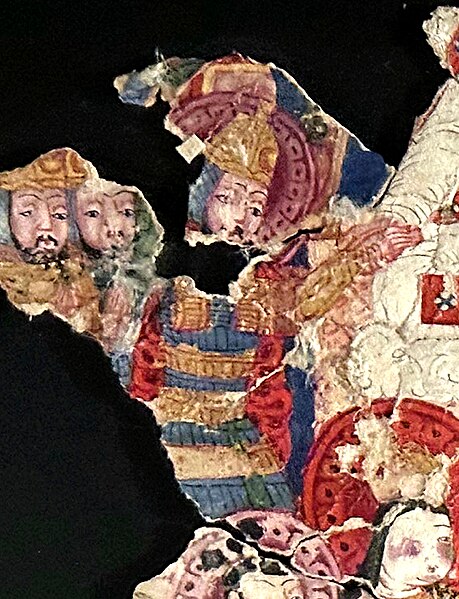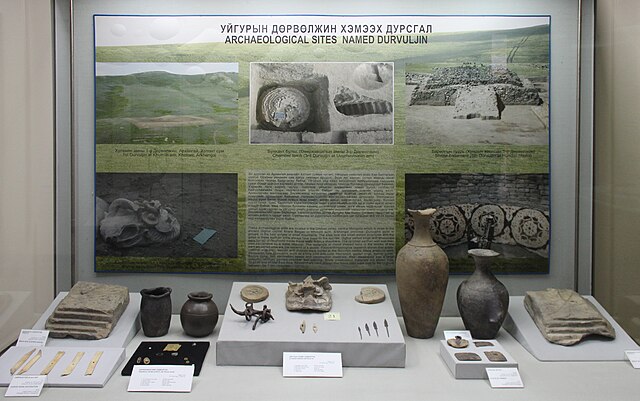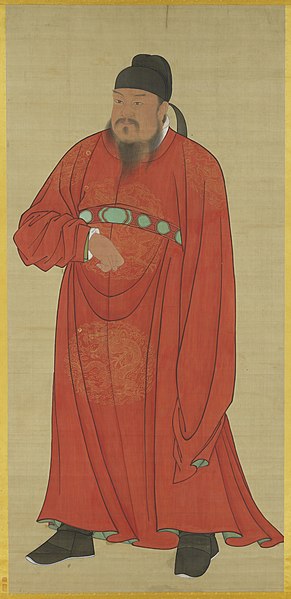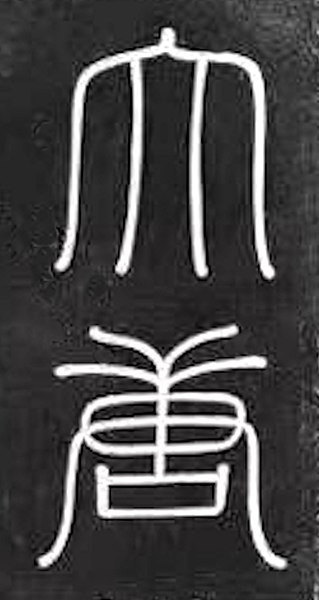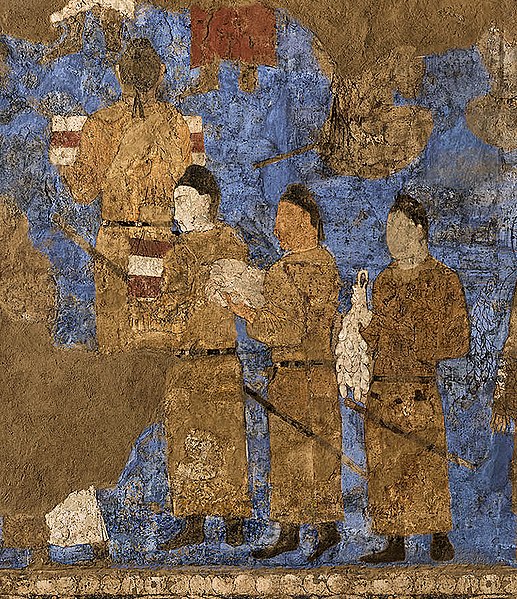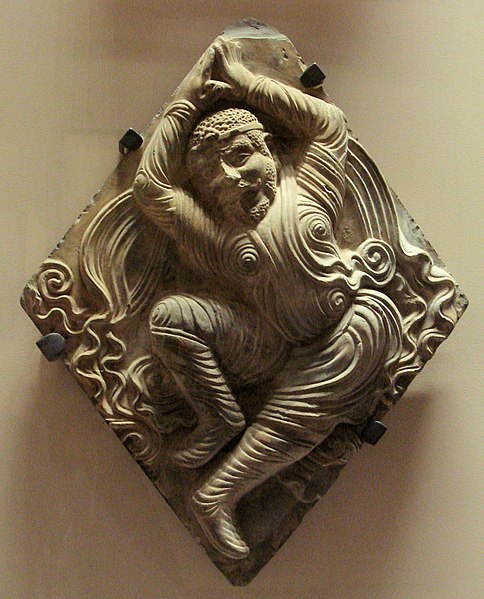The Uyghur Khaganate was a Turkic empire that existed for about a century between the mid 8th and 9th centuries. It was a tribal confederation under the Orkhon Uyghur (回鶻) nobility, referred to by the Chinese as the Jiu Xing, a calque of the name Toquz Oghuz or Toquz Tughluq.
Bögü Qaghan, third Khagan of the Uyghurs, in a suit of armour, converting to Manicheism in 762. 8th century manuscript (MIK III 4979).
Uyghur princesses from the Bezeklik murals.
Uyghur princes wearing Chinese-styled robes and headgear. Bezeklik, Cave 9, 9–12th century CE.
Uyghur Khaganate "Durvuljin" tombs, near the Uyghur capital of Khara Balgas, 7th–9th century CE. Orkhon Valley. National Museum of Mongolia
The Tang dynasty, or the Tang Empire, was an imperial dynasty of China that ruled from 618 to 907, with an interregnum between 690 and 705. It was preceded by the Sui dynasty and followed by the Five Dynasties and Ten Kingdoms period. Historians generally regard the Tang as a high point in Chinese civilization, and a golden age of cosmopolitan culture. Tang territory, acquired through the military campaigns of its early rulers, rivaled that of the Han dynasty.
Portrait painting, dating to the Ming dynasty (1368–1644), depicting the first Tang emperor Gaozu (born Li Yuan, 566–635)
"Great Tang" (大唐; Dà Táng) in seal characters
Tang emissaries to Sogdian King Varkhuman in Samarkand, 648–651 CE, Afrasiab murals
Sogdian Huteng dancer, Xiuding temple pagoda, Anyang, Henan. Tang dynasty, 7th century

